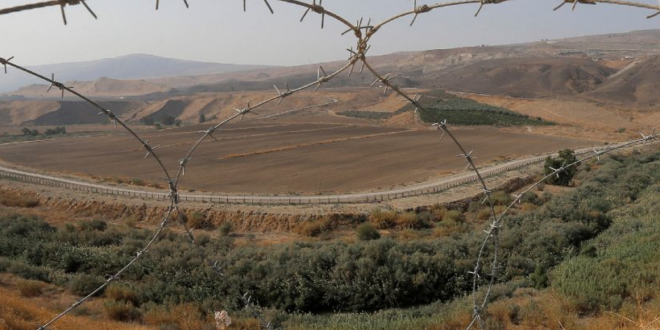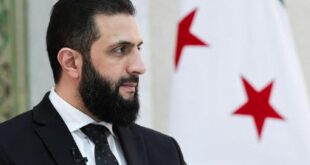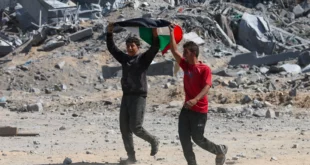Abstract: Despite dominating the headlines for almost a decade, surprisingly little is known about the Islamic State’s internal organization. After the declaration of the caliphate in June 2014, the organization’s center of gravity rested in the offices of the caliph and the spokesman and the Delegated Committee. Yet, with the deaths of successive caliphs, the territorial demise in the Levant, and the growing importance of its external provinces, the General Directorate of Provinces has emerged as the organization’s most decisive body. This is the first exhaustive account of the Islamic State’s most important, yet little understood, institution.
When Abu Bakr al-Baghdadi took the pulpit in Mosul’s Great Mosque on July 4, 2014, in his first public appearance as the new self-declared caliph, his organization had its firm foundation in Iraq and Syria, a region referred to as the Levant. Growing out of al-Qa`ida in Iraq, the Islamic State had historically been preoccupied with a regional focus, but the caliphate declaration immediately augmented the group’s geographical ambition to a global scale. In less than five months, the Islamic State would begin announcing its expansion to new countries around the Middle East, South Asia, and sub-Saharan Africa through its model of establishing provinces (wilayat).
In an attempt to manage its expanding organization and ensure the Levant-based leadership’s command over its new provinces, the Islamic State established the institution of the Administration of Distant Provinces (ADP) that later evolved into the General Directorate of Provinces (GDP). While its Delegated Committee (al-lajna al-mufawadda)a was in charge of defining the ideological course and clarifying issues of creed (aqida) and methodology (manhaj), the ADP was an administrative body intended to ensure cohesion and function as a focal point for communication across borders that over time developed to become the global organization’s most important institution. Although scarcely reported, it was of huge importance when a drone strike on February 20, 2023, killed Abu Sarah al-Iraqi while he was traveling on the Qah-Deir Hassan road in rural Idlib, northern Syria. Better known as Abd al-Raouf al-Muhajir, he was the emir of the Islamic State’s Shura Council and the GDP, effectively making him the Islamic State’s primary decision maker.1
According to U.N. reporting, the ADP/GDP was developed as “a hub-and-spoke approach to the problem of the core’s inability to maintain its previous level of command and control.”2 But over time, and especially under al-Baghdadi’s successor Abu Ibrahim al-Hashimi al-Qurayshi (the ‘caliph’ between October 2019 to February 2022), it has become an increasingly important institution within the ‘caliphate’ and now allegedly occupies a central position in the execution of external terrorist operations.3 Illustrating the concern in the counterterrorism community about the activities of the institution, on June 8, 2023, the U.S. State Department announced the designation of two GDP leaders as Specially Designated Global Terrorists. According to the State Department, “ISIS Core has relied on its regional General Directorate of Provinces (GDP) offices to provide operational guidance and funding around the world.”b
There remains little concrete information about the GDP’s exact role and activities, but this article intends to collect and present the pieces in the puzzle that are available to shed light on arguably the most important institution within the Islamic State. The GDP will likely be central in the evolution of the Islamic State in terms of its internal cohesion and power balance and the terrorism threat it will pose in the future. This article begins with an overview of the GDP’s origin, structural configuration, and institutional authority before proceeding with an examination of the first-known example of its interference in the Islamic State’s transnational affairs in the context of Yemen. Over the following three sections, it describes the institution’s decisive role in the group’s military and economic affairs and its growing responsibility managing its external attack planning and execution, before offering some concluding obeservations.
In addition to numerous reports by the United Nations’ Analytical Support and Sanctions Monitoring Team, the primary empirical foundation for this article is a series of internal Islamic State documents that the author has compiled from the platforms Telegram and Rocket.chat. Especially within the past year, a number of documents detailing the affairs of the ADP/GDP have been leaked by an account within al-Qaida’s online ecosystem. Because of the competitive and conflictual relationship between al-Qaida and the Islamic State, there is a real risk that such documents are forgeries.4 Fake documents have been seen in the past.5 Hence, there is a need to carefully consider each leaked internal document to assess its veracity.
The account that has been leaking many of the documents is allegedly run by former Islamic State members who identified with the so-called Binaliyya wingc of the Islamic State and left the group in protest against the dominance of a more extreme group, known as the Hazimiyyah.6 In examining the documents, however, this author did not find any red flags indicating that the documents are forgeries. Whenever possible, information in the letters has been triangulated through alternative sources.
Origins, Structure, and Leadership of the Directorate
It is not known exactly when the ADP was established. The earliest document mentioning the institution dates back to September 28, 2015, but the document’s top left corner states that it is document number 145 issued by the ADP. On this basis, it seems fair to assume that its origin dates back to the announcement of new Islamic State provinces in November 2014 or even earlier, going back to the announcement of the caliphate in late June that year.
The Islamic State has, since November 2014, been active announcing new provinces (wilayats) outside of the Levant. But it is likely that with the caliphate declaration several months prior, the organization identified a need to engage with like-minded groups outside of Syria and Iraq. Much of what is publicly known about the ADP/GDP comes from the United Nations’ Analytical Support and Sanctions Monitoring Team and is based on U.N. member state intelligence, but this information is largely limited to confirming the institution’s existence, including specific offices and responsibilities. This article offers the first in-depth look into the ADP/GDP. Through a detailed examination of the paper trail, a better understanding of its structure, responsibility, and importance for the Islamic State can be established.
At the very beginning, the ADP was nothing more than a committee based exclusively in the Levant with direct responsibility for outreach to and control over official affiliate groups. Yet, in the author’s assessment, it was a committee in its own right and not one and the same as the Delegated Committee (al-Lajnat al-Mufawwadah), as some have argued.7 The two institutions have existed simultaneously and with distinctive responsibilities, although there appears to have been an overlap in members between the ADP, the Delegated Committee, and the Shura Council. For instance, according to a variety of Islamic State documents reviewed by the author, the first emir of the ADP was Abu Muhammad al-Furqan (Wa’il al-Ta’i), who also headed the Islamic State’s Media Department and, for a brief period, the Delegated Committee, while also being a member of the Shura Council. As head of the ADP, al-Furqan used the kunya Abu Ubaydah Abd al-Hakim. Other members of the ADP and its successor include Haji Hamid (Sami Jasim al-Jaburi) and Hajji Zaid (Bashar Khattab Ghazal al-Sumaidai), who were both on the Delegated Committee, and who have both been arrested.
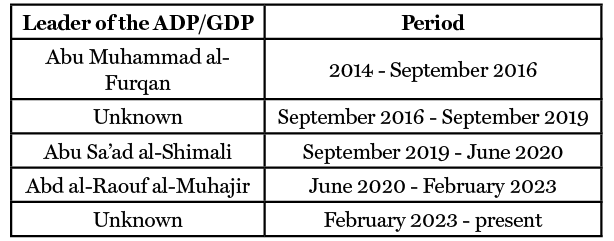
After the death of Abu Muhammad al-Furqan in September 2016, there is little information about the leadership of the ADP until September 2019, when Abu Sa’ad al-Shimali (Fayez Al-Akal) took over. Al-Shimali was himself killed near al-Bab in Syria in June 2020 by a drone strike while traveling on a motorbike.8 He was then succeeded by Abd al-Raouf al-Muhajir (Abu Sarah al-Iraqi), a senior leader who also occupied a place on the group’s Shura Council and was a central voice in the election of Abu al-Hussein al-Husseini as caliph. As already outlined, al-Muhajir was killed on February 24, 2023.9
At some point during the Islamic State’s evolution, the structure of the ADP started to change. New provinces were added while the existing organization of provinces was altered to either better fit realities on the ground or simply as a symbol of power projection. For instance, in late 2015, prior to it becoming an official province, Somalia was under the authority of the Islamic State’s Yemeni Province, which ‘supervised’ Islamic State sympathizers in Somalia,10 but on December 24, 2017, Somalia was for the first time referred to as an independent province.d The major restructuring, however, came with the establishment of a series of regional offices: Maktab al-Sadiq covering Afghanistan, Pakistan, Iran, India, and the rest of South Asia; Maktab al-Karrar covering Somalia, the Democratic Republic of the Congo (DRC), and Mozambique; Maktab al-Furqan covering the Lake Chad Basin and the Sahel; Maktab al-Anfal (now defunct) covering Libya and neighboring countries; Maktab Umm al-Qura covering Yemen, Saudi Arabia, and the Gulf; Maktab Dhu al-Nurayn covering Egypt and Sudan; and Maktab al-Farouq covering Turkey, the Caucasus, Russia, and Europe. (See Figure 1.)
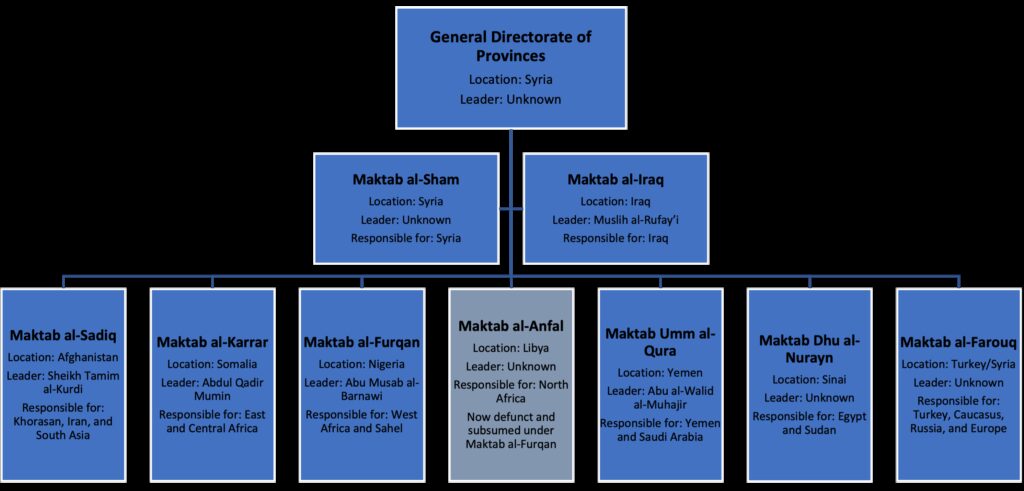
It is not clear exactly when this development of regional offices happened, but it likely occurred with the creation of a series of new smaller provinces such as Central Africa, Turkey, and India in the spring of 2019.11 With the rapid expansion of new provinces, a regional office structure enabled the Islamic State’s central institutions to command and communicate to its global provinces much more efficiently. According to internal documents, as of late 2020, salary structure for the leaders of the organization is as follows: emirs and deputies of ADP/GDP offices are paid a monthly salary of $300, emirs of provinces are paid $200, and emirs of subnational provinces such as Idlib, Hauran, Baghdad, and Anbar are paid $100.12
Possibly as part of this restructuring, the provinces in Syria and Iraq also came under the authority of the ADP despite not being very ‘distant.’ It might also be that the inclusion of Syria and Iraq occurred a little later, because sometime between July 28 and September 27, 2020, the ADP was renamed the ‘General Directorate of Provinces’ (Idarat al-’Ammat al-Wilayat), GDP. It now referred to an institution in charge of all provinces and not simply those being ‘distant.’ This shift cemented the institution’s growing power within the Islamic State.
According to the United Nations, “ISIL command and control over its provinces has loosened, although it still functions in terms of the provision of guidance and some financial support.” Over recent years, the group has experienced a decentralization of its internal power distribution, with provinces gaining more autonomy.13 The United Nations additionally claims that the best-functioning offices are al-Sadiq, al-Furqan, and al-Karrar, which corresponds with the localities where the Islamic State is currently experiencing success.14
Interference to Quell Dissent in Yemen
The first textual proof of the ADP’s existence came in a cache of documents published by the researcher Aymenn Jawad al-Tamimi and dealt with an episode of dissent within the Islamic State’s franchise in Yemen in late 2015-early 2016. Al-Tamimi documented the episode based on seven internal documents comprising a set of complaints from dissidents in Yemen against the local wali (Islamic State governor) and the response from Abu Ubaydah Abd al-Hakim, a pseudonym for Abu Muhammad al-Furqan, the then head of the ADP.15 In the new cache of documents collected by the author (Hamming), an additional nine documents concerning the dissent in Yemen have been uncovered. They help to show the extensive involvement of the ADP in the affair.
The documents translated by al-Tamimi indicated that the whole episode began with a letter dated December 15, 2015, in which a large number of dissidents conveyed their criticism of the wali in Yemen to the Islamic State’s central leadership. But, in actual fact, the new documents make clear that the whole affair began months earlier in September 2015, with correspondence between the then ADP head al-Hakim and Abu Usama al-Muhajir (Muhammad Qanan al-Saya’ri), the interim wali in Yemen. The letter touched on several issues that al-Hakim needed answers to: He asked Abu Usama to send a situation report from Yemen, about how much funding he received from the Islamic State’s central coffers, and because Abu Usama had made changes to the Shura Council in Yemen, he requested biographies of new council members and reprimanded Abu Usama for making such changes without consulting the ADP first. Most importantly, however, al-Hakim informed Abu Usama that the ADP was about to announce his appointment as the permanent wali in Yemen, replacing Abu al-Maali.16 The same day, al-Hakim sent a letter announcing Abu Usama’s new official role, saying that he was approved directly by Abu Bakr al-Baghdadi.17
In one of his first actions as the new wali, Abu Usama issued a statement on November 1, 2015, expelling 15 members of the Islamic State in Yemen without the knowledge of the ADP. He explained that he has been informed that some members had disobeyed orders and that they were sowing discord (fitna) within the ranks. He also prohibited any remaining members from having contact with those expelled.18
Two weeks later, Abu Usama received a reprimand from al-Hakim. Reacting to the news of the expulsions from Yemen, al-Hakim reminded Abu Usama that he must always consult with the ADP on such matters because only the ADP has the authority to expel anyone from the Islamic State. This highlights the central role the institution had back in late 2015, managing the Islamic State’s global affairs. In an attempt to remedy the problem, al-Hakim instructed Islamic State members in Yemen not to circulate any information about the expulsion and prohibited them from opening personal social media accounts. On a more general note, he also reminded Abu Usama and his Shura Council to send regular situational reports and to find a secure method to receive funding from the Levant.19
In an effort to clear itself of all wrongdoing, the Yemeni Islamic State Shura Council eventually responded to the ADP. In a letter dated December 14, 2015, the Shura Council complained about an individual named Abu Khaybar al-Somali, whom it considered the source of dissent in Yemen and who had allegedly created “a group within the group,” telling Islamic State members that Yemeni leadership was not following “the prophetic methodology.” The leadership in Yemen asked for advice on how to act against Abu Khaybar al-Somali and his group of dissidents and for permission to expel them.20
The following day, a letter of dissent was signed by 70 members of the Islamic State’s Yemeni group and sent to the ADP. This is the first letter covered by al-Tamimi. The dissidents wrote to the Levant-based leadership, informing them of shari’i (legal) infringements and violations of the prophetic methodology. They also complained about the military strategy of the group that allegedly had led to high casualties on the frontline. In another humiliation for the Islamic State’s Yemeni leadership, the dissidents pledged allegiance directly to al-Baghdadi to indicate their continued membership of the group while opposing the local leadership.21 Two days later, another 31 dissidents signed a letter of complaint against the leaders in Yemen, stating their refusal to work under the wali.22
In between the two dissident letters, the Shura Council in Yemen sent a second letter to the ADP, again complaining about Abu Khaybar al-Somali and his co-conspirators. Providing the ADP with detailed information about the dissident leaders, it asked al-Hakim to issue a strong statement to deter further rebellion. To discredit al-Somali further, the Shura Council wrote that he enjoyed a close relationship with the emir of al-Qa`ida in the Arabian Peninsula (AQAP), Nasir al-Wuhayshi, and his successor, Qassim al-Rimi, with whom the Islamic State was actively competing.23 On the same day, the Yemen wali Abu Usama wrote to the ADP again, asking them to relieve him of his duties because he did not feel up to the task and advised them to replace him with Abu Muhammad al-Jazrawi, a veteran from the Levant.24
When al-Hakim and the ADP eventually responded on December 19, 2015, to the prior series of letters, they rejected the dissidents’ disavowal of Abu Usama and ruled that such behavior constituted disobedience to the caliph. Warning against splitting the ranks, the ADP told the dissenters to return to the group under Abu Usama’s leadership, and if anyone refused, they should consider themselves expelled.25 In a desperate attempt to win sympathy for their cause, the dissidents responded with a pledge of allegiance to al-Baghdadi but remained firm on their disavowal of the wali.26 Doing so helped little. On December 26, 2015, the ADP issued a statement expelling seven leaders of the rebellion, including Abu Khaybar al-Somali. The individuals were further told to hand back all belongings in terms of weapons and wealth that were the property of the Islamic State.27 About a month later, the ADP issued another statement explaining that, now after some time had passed, all those who continued to support the expelled dissident leaders would face a similar fate.28 Abu Usama’s request to be relieved of duty was later rejected. He was eventually apprehended in a joint Saudi-Yemeni operation on June 3, 2019.29
Institutional Leadership and Authority
The GDP and its predecessor ADP are administrative institutions not only acting as a bridge between the Islamic State’s central leadership and its various provinces but are also directly responsible for managing high-level affairs within the provinces’ domain. This includes issuing guidelines on how provinces should organize, supervising election of leadership figures, and acting as judge in the context of intra-provincial problems, as the early episode of conflict management in the context of Yemen illustrates.
The internal documents reviewed show that the ADP/GDP has tremendous institutional power within the Islamic State and directs how provinces are organized and set up. As the following sections in this article detail, the Islamic State’s central leadership based in Syria and in Iraq issue orders on how provinces should organize their economic institutions, handle their finances, and pursue their military strategy. Arguably, the most direct example of ADP/GDP interference is the election of leadership.
In the Yemeni case, it was the ADP that officially appointed Abu Usama al-Muhajir as the new emir of the province in 2015. A document sent to the Islamic State’s province in Khorasan covering Afghanistan, Pakistan, and India noted that the emir of Maktab al-Sadiq, Sheikh Tamim al-Kurdi (Abu Ahmed al-Madani), was not just chosen by the ADP but also sent to that region. He was most likely dispatched from the Levant.30
An even more revealing example comes from West Africa. On July 27, 2020, Abd al-Raouf al-Muhajir, who then headed the ADP, sent a letter to the emir of Maktab al-Furqan, Abu Musab al-Barnawi, informing him of the appointment of Adnan Abu Walid al-Sahraoui as al-Barnawi’s first deputy. At the time, al-Sahraoui headed the Islamic State Greater Sahara (ISGS) group, but al-Muhajir informed al-Barnawi of the decision to integrate ISGS into the Islamic State’s West Africa (ISWAP) Province. Al-Sahraoui’s responsibility would remain in the Sahel, with the then ADP head al-Muhajir outlining Sahraoui’s direct supervision of Mali and Burkina Faso.31
In the July 2020 letter, which came as a response to a previous letter from al-Barnawi to the ADP, al-Muhajir stated that a second ISWAP deputy emir had been appointed on al-Barnawi’s request. That second deputy emir was Abu Bilal al-Mainoki, whom al-Barnawi had supposedly initially requested as a first deputy, but he appears to have been overruled on this first request by the ADP. Indicative of the Islamic State’s regional hierarchy in West Africa, it was made clear that al-Mainoki as the second deputy emir of ISWAP was subordinate to al-Sahraoui and should “listen [to] and obey” his instructions.32 A veteran, al-Mainoki previously headed the ISWAP’s finances.33 Underlining the administration’s desire to remain in control, al-Muhajir also stated that all communication between al-Barnawi and his two deputies must be shared with the ADP in the Levant.34
Military Affairs
A central element in the relationship between the Islamic State’s provinces and the ADP/GDP is the obligation provinces have to send monthly reports on the ongoing military situation in their respective region and, in return, receive advice on future strategy and tactics. Such links of authority and knowledge transfer are some of the most important and worrying indications of a substantial connection between the Islamic State’s central organization and its external provinces. Understanding these links help illuminates the strategic and tactical trajectory of militants associated with the Islamic State around the world.
While this obligation is dictated by the ADP/GDP, documents show that the process of sending such reports and receiving responses has been fraught with problems. For instance, on October 10, 2017, al-Barnawi wrote a letter to the ADP approximately a year after his appointment to the position as emir of Maktab al-Furqan. The letter is essentially an update on the military situation in West Africa, but al-Barnawi struck a tone of extreme frustration—not only because he reported that no progress has been made on the ground, but also because the ADP, in his opinion, had failed to respond to his latest letters.35
Al-Barnawi’s October 2017 letter came at a time when the Islamic State was still struggling in the West Africa region, in stark contrast to its success at the time in expanding and holding territory elsewhere. The reason for this failure, according to al-Barnawi, was that his fighters lacked skills and “did not understand how to fight.” A specific issue he mentioned was the inability of his soldiers to hold a town or village when security forces returned to retake it. Highlighting his frustration, al-Barnawi wrote: “I have tried my best to remedy this deplorable situation. I have suggested to you a number of measures that I have devised and I was waiting for you to review them. Should you find a mistake, you will inform us and we will correct it, and if you validate them all without any modification, we shall implement them. Unfortunately, our call did not receive an answer.”36
In the letter, al-Barnawi brought up the transfer of tactical knowledge to the Islamic State fighters in Libya that helped them take over large swathes of territory along the coast, and made clear he believed that a similar outcome could become reality in West Africa if only the ADP would assist. “When it comes to military affairs,” al-Barnawi complained, “your guidance is required to organize the army, to recruit new fighters, to improve defenses, to learn attack tactics and the making of explosives, for the use of canons, mortars and howitzers. This is the biggest and the most chaotic sector and we deploy enormous efforts there in vain. It is necessary to send us a framework to help us overcome the big imbalance in our province.”
The frustration at the time clearly extended to the Islamic State’s West African fighters who, like al-Barnawi, felt an urgent need to receive expertise. Revealing these frustrations, al-Barnawi included the following anecdote: “I am reminded of a funny story when about a year ago, we seized Dragunov rifles as war spoils and we had to make them work so we could use them. We checked many handbooks and specialized videos on this technical issue, but we eventually dropped it in despair after all our attempts failed. We use artillery such as rifles or machine guns, putting them on cars and we do straight shots because otherwise we never hit the target since the shells fired miss the enemy, flying over his head or falling on the side to the point where the enemy is no longer bothered by us anymore and does not busy themselves protecting themselves from our fire. They know we will miss everything.” As Jacob Zenn and Vincent Foucher have argued, however, it is likely that such advice and assistance eventually reached Maktab al-Furqan and played a central role in turning around its success on the battlefield.37
Other accounts suggest that similar dynamics are taking place in central and east Africa. In September 2021, Hytham Alfar, a Jordanian national with the Islamic State in DRC, was arrested. While details remain scarce, it has been reported that he was sent to DRC to help Islamic State fighters enhance their technological warfare capabilities.38 In Mozambique, large caches of Islamic State documents that focused on operational elements such as how to employ specific weapons systems and tactical maneuvers have been retrieved by military forces raiding the camps. Experienced trainers have also come to Mozambique from both DRC and Somalia to help the insurgency train and specialize.39
Economic and Financial Affairs
Another aspect where the ADP/GDP has had a very significant impact is on the caliphate’s global financial structure and the provinces’ respective economic and financial responsibilities. The examined letters reveal a surprising financial structure around 2017 with funds no longer flowing from the organization’s central coffers to the provinces, but instead partly from the provinces to the center, a model Caleb Weiss et al. refer to as a “regionally pooled financing” model.40
The first indication of the ADP/GDP’s sway over the Islamic State’s finances is a letter from January 2020, in which it attached a book on economics that all states were obliged to review and follow.41 The contents of that book are not known, but another letter from October 11, 2020, is helpful to understand the group’s new economic directives. In the letter, signed by Abd al-Raouf al-Muhajir, all provinces were informed that a General Economic Office has been set up under the authority of the GDP. Al-Muhajir asked all the provinces to set up a similar economic office to manage their respective economic affairs and communicate directly, through encryption, with the GDP’s economic office.42
In another letter, dated January 21, 2021, al-Muhajir reiterated the above instructions involving the structures of economic offices and wrote that a person should be appointed in each regional office in charge of the economy.43 A similar structure is spelled out in another undated letter that was most likely authored sometime in late 2017 or early 2018 and is entitled “Instructions on the Economic Work in the States.” Again, it is mentioned that each small and large province should set up an economic office with the person responsible for the economy in larger provinces receiving direct instructions from the head of the economic department in Iraq.44
The same letter also detailed the allocation of funds accumulated in the caliphate’s larger provinces. As a new policy, 50 percent of funds was required to be allocated for smaller provinces associated with a specific larger province, 25 percent for the general administration of larger provinces, and 25 percent to the Islamic State’s Bayt al-Mal.e For example, this meant that in West Africa, Maktab al-Furqan was required to ensure that 50 percent of the funds generated by the Islamic State’s West Africa province in Nigeria were dispersed to the smaller provinces under its tutelage in Mali, Burkina Faso, Niger, and Chad. In the context of central and east Africa, there is reporting on how Maktab al-Karrar in Somalia has been sending funds to the smaller provinces in DRC and Mozambique.45 Bilal al-Sudani, a Sudanese Islamic State leader in Somalia killed by U.S. forces in January 2023, was in charge of this transfer scheme through a range of associates in South Africa, Kenya, and Uganda, relying on a complex web of money transfer systems.46
According to the United Nations and the United States, Maktab al-Karrar has been not only sending money to the smaller provinces directly under its authority, but also the Islamic State province in Khorasan (ISK).47 This complexity is confirmed in the cache of internal documents assessed in this article. In a letter from the emir of Maktab al-Karrar, Abd al-Qadir Mu’min, dated November 22, 2018, and addressed to the ADP, Mu’min confirmed that Maktab al-Karrar would send funding to Islamic State provinces in Turkey and Yemen and noted the complicated nature of sending money to Turkey. Mu’min’s letter helps make clear why his regional office had such a central role in the Islamic State’s global economic structure despite its minor presence in Somalia. Maktab al-Karrar generated more than enough money to cover its own needs, he explained, and thus was capable of providing funds to other provinces. Since the letter was authored prior to the official announcement of Islamic State provinces in DRC and Mozambique, which fall under Maktab al-Karrar, it is not clear if his largesse at the time provided funding for these geographic areas.48
The fact that part of the larger provinces’ funds were allocated to the central organization’s Bayt al-Mal is noteworthy because it indicates a noteworthy shift in the Islamic State’s economic structure. As Weiss et al. have also noted, previously the Islamic State central organization was relying on a funding model sending money to its provinces, but with its degradation of the organization in Syria and Iraq and the strengthening of various provinces, at least for a period beginning around 2017, it appears to have been the other way around.49 It is unclear how well the ‘new model’ functioned, however, because in a letter dated January 22, 2019, the GDP identified a problem of not receiving the requested funding from the provinces.50
In addition to the new system for the distribution of funds within the Islamic State, the ADP/GDP also expected smaller provinces to send a situation report to the emir of the economy in the associated larger province on a monthly basis. In the context of central Africa, for instance, that implied that the person responsible for the economy in the Islamic State’s Central Africa Province (ISCAP) should send monthly reports to the wali of economy in Somalia. That regular economic reporting was important to the organization’s leadership is revealed in a reprimanding letter from March 23, 2018. Here, someone from the ADP asked the wali of the province in Yemen to send a detailed report on the economic situation and asked the person in Yemen in charge of submitting monthly reports to ensure they would be sent in the future.51
External Attacks
There are indications that the GDP has assumed responsibility for external attack planning. According to a February 2021 report by the U.N. monitoring team charged with tracking the global jihadi threat, based on member state intelligence the “general directorate of provinces is key to reviving ISIL external operational capability,”52 and sources tell the author that the institution is now in charge of all planning and execution of external attacks, with special responsibility handed to Maktab al-Farouq due to its geographical focus on Europe.53 If this is the case, it implies that an understanding of the institution is not merely relevant to understanding the internal workings of the caliphate’s global organization, but is also essential to grasping the terrorism threat that the group currently poses to territory outside its main theaters of operations, including in the West. The February 2021 U.N. report added that “the better established the remote provinces become, and the more unstable the conflict zones in which many of them are embedded are, the greater the potential external threat.”54
The Islamic State’s external attacks capacity was previously under the authority of the organization’s security unit, Diwan al-Amn, and more specifically the Amn al-Kharji (external security). The external security branch was responsible for planning terrorist attacks such as the November 2015 attack in Paris, but also handling cases where so-called virtual planners reached out to individuals in the West and provided support and advice on how to commit attacks.55 Ever since the Amn al-Kharji was largely dissolved in 201756—when the Islamic State lost much of its territorial caliphate in Syria and Iraq under severe military pressure—the organization has been incapable of orchestrating and directing attacks to the extent that it did during the 2015-2017 period.
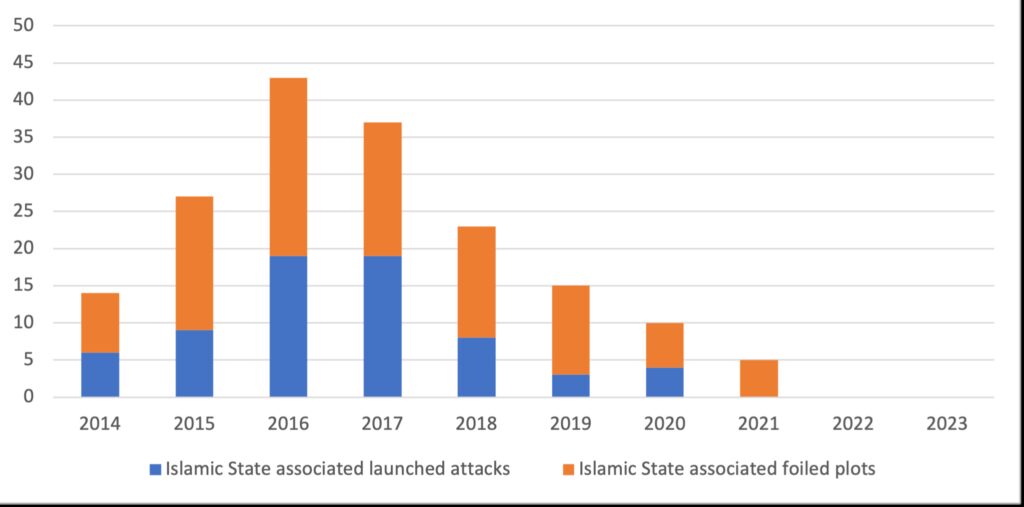
With its presence in the borderland between northwestern Syria and southeastern Turkey and its responsibility for Europe, Maktab al-Farouq is the natural candidate to take over the role of orchestrating, coordinating, and inspiring terrorist attacks in the West. Its management of the Caucasus file makes this role more likely, since a large number of Caucasian Islamic State members are present in Turkey with direct access to Europe. So far, no attacks or plots in the West can be directly connected to Maktab al-Farouq, but this may be due to an absence of access to attack plot information.
According to data compiled by the author based on publicly available information, no attacks in the West (Europe, North America, and Australia) since 2020 and no plots since 2021 can be associated with the Islamic State. Association in this context includes planning, guidance, or inspiration. While this data could indicate that the group during this period lost its capability to orchestrate, guide, or inspire attacks in the West, this might not be the case. Detailed information on attacks and foiled plots often becomes available much later through additional investigation or ensuing court cases. Hence, it might emerge that the Islamic State was indeed associated with recent attack plotting.
Recent testimony and reporting further strengthens the assertion that ‘remote provinces’ are taking the lead in orchestrating external attacks, albeit not necessarily under the exclusive responsibility of Maktab al-Farouq. In March 2022, the then CENTCOM Commander General Kenneth F. McKenzie testified that ISK would develop an external attack capability within 12 to 18 months.57 In March 2023 current CENTCOM commander General Michael Kurilla testified that ISK had its sight set on attacking Western interests and could carry out “external operations against U.S. or Western interests abroad in under six months with little to no warning,” with it being more likely the group would target Western or U.S. interests in Asia and Europe because it was “much harder” to attack the U.S. homeland.58
As of February 2023, according to reporting in The Washington Post, Pentagon officials believed that as many as 15 terrorist plots targeting the West had been coordinated by Islamic State operatives in Afghanistan.59 Gaining a better understanding of the Islamic State’s remote provinces is thus crucial to combat and prevent future plotting against Western homelands.
The Rubber Band Keeping the Islamic State Together
With Turkish claims that yet another caliph was killed on April 21, 2023, in Jinderes, northwestern Syria, the Islamic State’s leadership in the Levant may be facing additional pressure.60 While leadership decapitation does not end terrorist organizations, the continuous killing and arrest of senior leaders has seriously weakened the group’s central power base and arguably helped tilt the internal power balance more toward provinces outside of the Levant, enabling stronger decentralization.61
This weakening of the caliph’s office has not only turned the GDP into arguably the most powerful institution within the Islamic State’s Levant-based organization, it has also positioned the institution in a key role in the global management of the caliphate. With a weakening center and the strengthening of several provinces, the ability to keep the ‘hub’ and ‘spokes’ together cohesively will be critical for the Islamic State’s future. If the Islamic State were to experience the kind of organizational splintering that al-Qa`ida has suffered from, it would be catastrophic for the caliphate’s grand narrative.
 Eurasia Press & News
Eurasia Press & News
